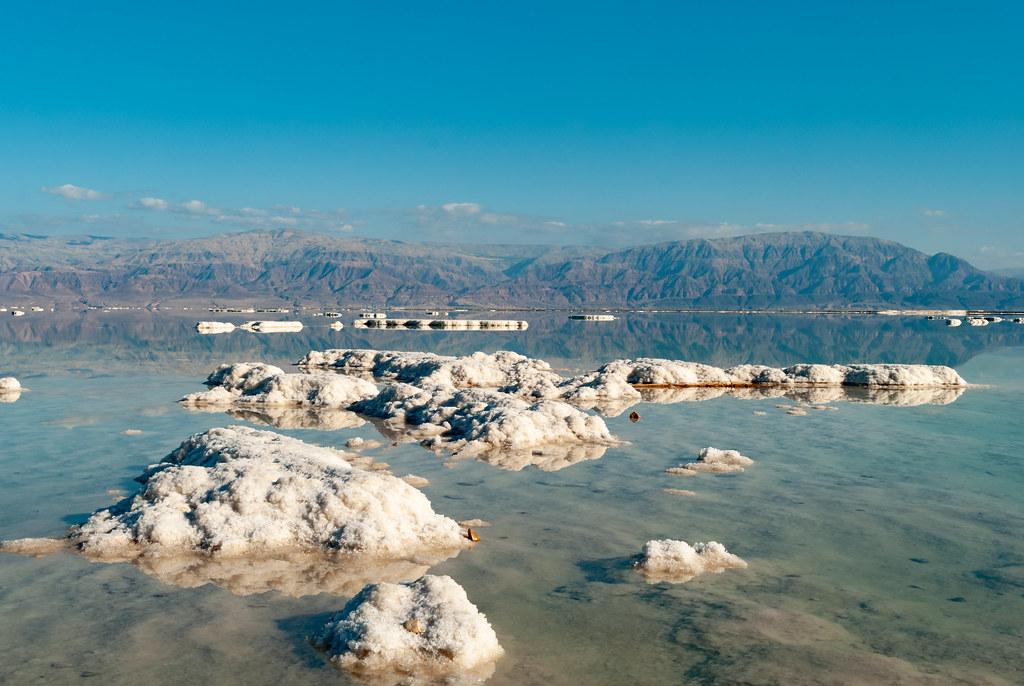In the culinary world, few ingredients hold as much universal sway as salt, the humble yet essential mineral that enhances flavors and preserves foods. Yet, amidst the plethora of salt varieties lining supermarket shelves, a debate simmers quietly: Is sea salt healthier than table salt? This question, deceptively simple on the surface, dives into the depths of nutrition, culinary arts, and even environmental considerations. As consumers become increasingly health-conscious and attuned to the nuances of their diets, understanding the differences between these two crystalline condiments becomes more pertinent. Join us as we unravel the myths, examine the facts, and explore the subtle distinctions that might just change the way you season your next meal.
Sea Salt vs Table Salt: Unraveling the Myths
When comparing these two culinary staples, it’s essential to understand their origins and processing methods. Sea salt is harvested from evaporated seawater and usually undergoes minimal processing, which helps retain trace minerals like magnesium, potassium, and calcium. This can give it a slightly different flavor profile and color compared to its more refined counterpart. On the other hand, table salt is typically mined from underground deposits and often contains additives like anti-caking agents to ensure it remains free-flowing.
- Mineral Content: Sea salt contains small amounts of minerals due to its less refined nature, but these are present in such minimal quantities that they have negligible health impacts.
- Sodium Levels: Both sea salt and table salt contain comparable levels of sodium by weight, which means moderation is key regardless of your choice.
- Texture and Flavor: Sea salt crystals are larger and coarser, which can enhance texture and taste when used as a finishing touch on dishes.
Ultimately, whether you choose sea salt or table salt may come down to personal preference and culinary application rather than health benefits. Both types should be used sparingly to maintain a balanced diet.
The Nutritional Breakdown: Does Sea Salt Offer More?
When comparing the nutritional profiles of sea salt and table salt, the differences are subtle yet intriguing. Both primarily consist of sodium chloride, but sea salt is often marketed as the healthier alternative due to its trace minerals and natural harvesting process. Sea salt retains small amounts of minerals like magnesium, calcium, and potassium, which are stripped away in the refining process of table salt. These minerals not only contribute to its unique flavor but also add a touch of nutritional value.
- Magnesium – Known for supporting muscle and nerve function.
- Calcium – Important for bone health.
- Potassium – Essential for maintaining proper heart and muscle function.
Despite these differences, the quantities of these minerals in sea salt are minimal and unlikely to make a significant impact on your overall nutrient intake. The primary nutritional consideration for both types of salt remains their sodium content. Excessive sodium consumption is linked to health issues like high blood pressure, so moderation is key regardless of the type you choose. Ultimately, the choice between sea salt and table salt may come down to personal preference in taste and texture rather than substantial nutritional benefits.

Health Implications: What Science Says About Salt Choices
When it comes to understanding the health implications of salt choices, the scientific community offers a nuanced perspective. Both sea salt and table salt contain comparable amounts of sodium chloride, which is essential for bodily functions like nerve transmission and muscle contraction. However, excessive sodium intake can lead to hypertension and cardiovascular diseases. The American Heart Association recommends limiting sodium intake to less than 2,300 milligrams per day, regardless of the type of salt consumed.
- Mineral Content: Sea salt is often touted for its trace minerals like magnesium, potassium, and calcium, which table salt lacks due to its refining process. However, the quantities present are usually too minimal to make a significant health difference.
- Additives: Table salt typically contains additives like anti-caking agents and iodine. While these are generally safe, some individuals prefer sea salt for its more natural composition.
- Taste and Texture: The coarse texture and distinct flavor of sea salt may lead people to use less, potentially reducing overall sodium intake, though this is more of a culinary preference than a health benefit.
Ultimately, the choice between sea salt and table salt should consider personal taste and dietary needs rather than health superiority. The key takeaway from scientific studies is moderation and mindful consumption, ensuring that sodium levels stay within recommended guidelines for optimal health.

Expert Recommendations: Choosing the Right Salt for Your Diet
When it comes to selecting the right salt for your diet, there are several factors to consider beyond the simple choice between sea salt and table salt. Both types of salt have their own unique attributes and uses. Here are some expert tips to help guide your decision:
- Mineral Content: Sea salt is often touted for its trace minerals like magnesium, calcium, and potassium, which can add subtle flavor and potentially contribute to nutritional intake. However, these minerals are present in very small amounts.
- Processing: Table salt is typically more processed, with added anti-caking agents and iodine, which is essential for thyroid health. Sea salt, on the other hand, is usually less processed and might retain some natural elements from the sea.
- Flavor and Texture: Sea salt crystals are larger and coarser, providing a different texture and a burst of flavor when used as a finishing touch on dishes. Table salt’s finer grains dissolve quickly, making it ideal for baking and precise seasoning.
- Sodium Levels: It’s important to remember that both sea salt and table salt contain similar levels of sodium by weight, so moderation is key regardless of the type you choose.
Ultimately, the choice between sea salt and table salt can depend on personal preference, dietary needs, and culinary application. Consider these factors when making your selection to ensure that the salt you choose aligns with your health goals and taste preferences.
Key Takeaways
As we conclude our exploration of the salt spectrum, from the crystalline shores of sea salt to the refined grains of table salt, it’s clear that the debate over which is healthier is nuanced. While sea salt offers a touch of nature’s artistry with its trace minerals and coarser texture, table salt stands firm with its iodine enrichment and consistent taste. Ultimately, the choice between these two comes down to personal preference and dietary needs, reminding us that the essence of a healthy lifestyle lies in balance and moderation. So, whether you sprinkle a pinch of the sea or a dash of the table, savor the flavor and let your palate be the guide on this flavorful journey.


































